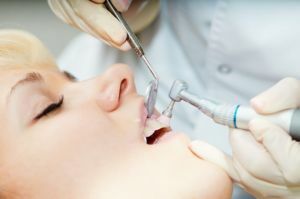 Even with regular dental hygiene in the morning and in the evening in hard-to-reach places there are particles of food and plaque. Over time, they accumulate and become dense tartar, which is simply impossible to remove with a conventional toothbrush.
Even with regular dental hygiene in the morning and in the evening in hard-to-reach places there are particles of food and plaque. Over time, they accumulate and become dense tartar, which is simply impossible to remove with a conventional toothbrush.
Solid deposits, in turn, cause many diseases of the oral cavity. Therefore, dentists recommend professional cleaning of teeth twice a year. And the most effective and safe option is to remove tartar and plaque by ultrasound.
Contents of
- What is the essence of the methodology?
- Indications and contraindications to the procedure
- Step by step - stones away!
- Pros and Cons of the
- Method What can and can not be done after the
- procedure What for what?
- The opinion of patients of dental clinics
What is the essence of the technique?
Cleansing of teeth by ultrasound - judging by the feedback, this is the fastest and most effective method of removing plaque and hard deposits from the teeth( tartar).Compared with other methods of professional cleaning, it is the most safe and qualitative.
Under the influence of ultrasonic vibrations, tartar is very easily separated from the enamel without causing damage to it.
In addition, the bacteria that are on the dentition are destroyed.
Ultrasound cleaning is carried out using a special device - scaler. Due to the rapid vibration of the manipulator tip, the tartar easily collapses. During the procedure, not only the surface of the enamel, but also the periodontal pockets are thoroughly cleaned.
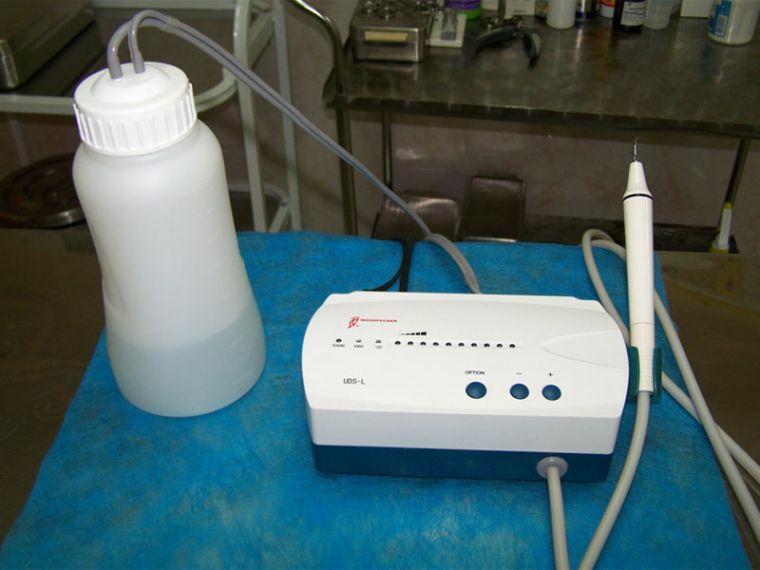
On the photo the scaler is a device for cleaning teeth by ultrasound
Indications and contraindications for the procedure
Professional oral hygiene, namely, ultrasound cleaning of teeth, is necessary for people who have hard plaque on their teeth - tartar.
On its presence can speak such signs as: 
- gingival inflammation, redness, swelling of soft tissues near the teeth;
- gum bleeding;
- bad breath in the absence of teeth affected by caries;
- visible plaque on the tooth enamel.
A person can find out for himself the presence of solid deposits or the dentist informs him. In any case, get rid of the stone at home using a conventional brush and paste it is impossible.
Therefore, in order to avoid the development of more serious problems with teeth and gums, the patient is recommended ultrasonic teeth cleaning in the dentist's office.
Also removal of dental deposits is the main measure of prevention and treatment of periodontitis, periodontitis and other inflammatory diseases of the gums. Since in these cases tartar and plaque becomes the main cause of the disease.
But although the procedure is considered safe, it still has some contraindications. Do not use ultrasound tartar removal:
- for children and adolescents;
- for patients who have implants or orthopedic systems( braces) in their mouths;
- in the presence of diseases of the respiratory system: bronchitis, SARS, acute respiratory infections, asthma and others;
- to persons at risk: various types of hepatitis, HIV, tuberculosis, epilepsy, severe diabetes.
- for women in the first trimester of pregnancy;
- for cardiac arrhythmia;
- people with hypersensitive teeth.
Step by step - the stones are off!
Ultrasound removal of dental deposits is as follows:
- if necessary, the doctor uses anesthesia;
- with the tip of an ultrasound unit, the dentist removes all deposits of tartar in the nondrump and subgingival areas of the teeth;
- the periodontal pockets are washed;
- hard-to-reach places that can not be cleaned with a tip are treated using abrasive strips.
- then the final cleaning of the dentition;
- further teeth must be polished using a special paste and brush, otherwise they will be very susceptible to various impurities;
- at the end of the tooth enamel is covered with a special protective varnish.
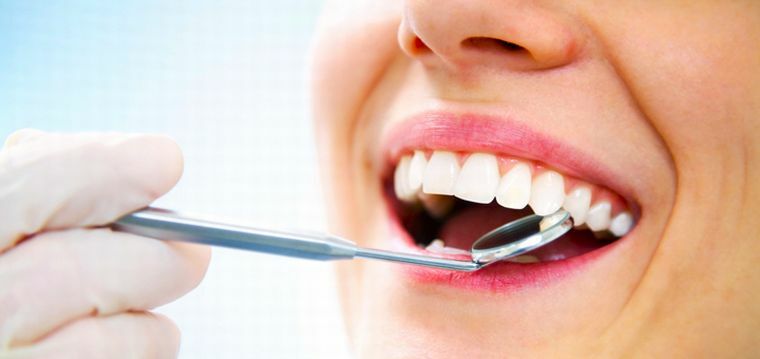
Usually ultrasonic cleaning lasts about 40 - 60 minutes. The dentist alternately carefully cleans every tooth. Supplied to the head of the scaler, water flushes the particles of plaque and provides better visibility.
Advantages and disadvantages of
The advantages of this method are obvious:
- The main and main advantage of ultrasound cleaning is its complete harmlessness for enamel .With other methods of occupational hygiene, such as mechanical or chemical exposure, its damage is unavoidable. In addition, the ultrasonic method is practically painless and rarely requires the use of anesthetics.
- After carrying out ultrasonic cleaning of , the roughness remains on the teeth, the surface of the enamel becomes completely smooth .And this makes the teeth more resistant to the formation of new deposits. That is, ultrasound cleaning does not just remove the dental deposits, but also prevents their further formation for a sufficiently long period.
- With this method of professional cleaning teeth become several tones whiter than , they are returned to their natural, natural color. Breathing becomes fresh, an unpleasant smell disappears.
- Teeth become more susceptible to treatment with prophylaxis. For example, fluoridation after ultrasound cleaning gives the best effect.
- The procedure is fast enough , usually it takes no more than an hour.
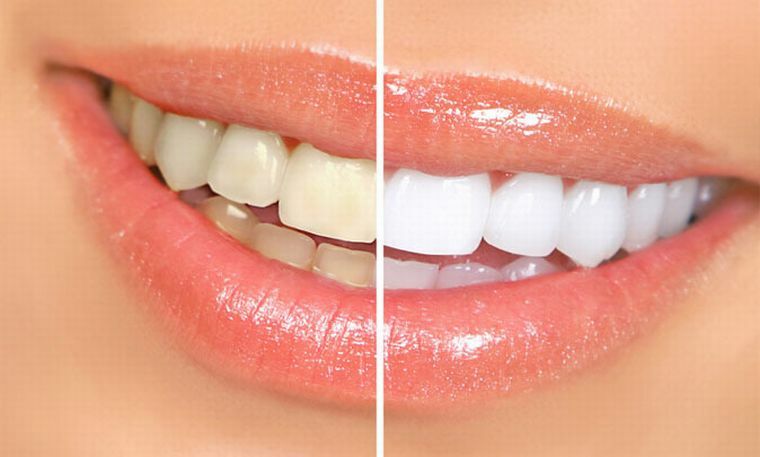
The result, as they say, on the face
But, like almost any medical manipulation, ultrasonic teeth cleaning has contraindications. It is not possible for all people to clean teeth with the help of ultrasonic waves.
Another drawback is that some patients experience unpleasant and even painful sensations during or after the procedure. In this case, the dentist resorts to the use of anesthesia.
What can and can not be done after the procedure
It is possible and even necessary:
- In the first 2-3 days after ultrasound cleaning, the should take special care of hygiene of the oral cavity .Should
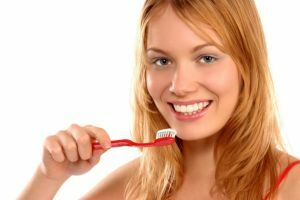 brush your teeth at least twice a day, and preferably after each meal.
brush your teeth at least twice a day, and preferably after each meal. - During the cleaning of the teeth of the house it is necessary to use not only a brush and paste, but also dental flosses and brushes .This is necessary because the gingival pockets have not narrowed after the ultrasonic procedure, and the enamel is susceptible to various dyes.
- You can eat solid fruits and vegetables , which do not contain coloring pigments.
At the same time prohibited:
- the first 2 hours of after the procedure is not recommended to eat or drink;
- in the following 2, and preferably 3 days should abandon the coloring products: coffee, strong black tea, red wine, beets and others;
- for at least 1 to 2 days after the procedure should not be smoked;
- on the day of cleansing after the procedure, it is necessary to exclude irritating food from the ration: acute, salty, sour, sweet, hot and cold.
What for?
Depending on the level of the clinic and its location, removal of calculus by ultrasound will cost an average of 70 to 150 rubles per tooth.
That is, if the patient has a full set of teeth, he will have to pay for the procedure from 2200-2500 rubles to 4500-4800 rubles. In some clinics, ultrasound oral hygiene costs more than 5000 rubles.
Opinion of patients of dental clinics
Having studied the opinions of patients who have been cleansed by ultrasound, it is possible to draw certain conclusions.
I smoke for more than 20 years and did not think that my teeth can still become so white. Prior to this, I did not clean it once, and my teeth were just black. Now like a Hollywood star.
The procedure as a whole is tolerable, although several times the sensations were on the verge of pain. It is very unpleasant when the stone is removed near the gum itself and under it, but for the sake of results it is possible to suffer. All the cleaning took about an hour, no more. But now I am pleased with my smile.
Ivan, 39 years old
I decided on ultrasonic cleaning of teeth and was very sorry. It turned out that my teeth are very, very sensitive. Withstood the first two teeth and refused to continue. It was very unpleasant, apparently, such a cleaning does not suit me.
Christina, 21 year
I did not notice any special darkening of teeth and ultrasonic cleaning before ultrasonic cleaning. But after the procedure I saw a clear difference. Teeth have become really lighter and look healthier. I am afraid of pain, therefore cleaning was done with application of anesthetic. But the procedure did not cause negative emotions, I did not feel any discomfort.
Stanislav, 25 years
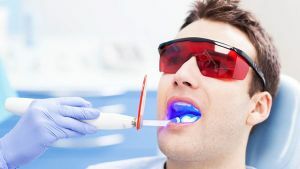 Cleaning your teeth with ultrasound is a very useful and necessary procedure. It has not only aesthetic, but also therapeutic and preventive value. Timely removal of tartar helps prevent most diseases of gums and teeth.
Cleaning your teeth with ultrasound is a very useful and necessary procedure. It has not only aesthetic, but also therapeutic and preventive value. Timely removal of tartar helps prevent most diseases of gums and teeth.
Using the same ultrasonic waves allows you to perform it efficiently, painlessly and relatively inexpensively. In any case, prevention will be much cheaper than treatment of possible oral diseases caused by hard deposits.
